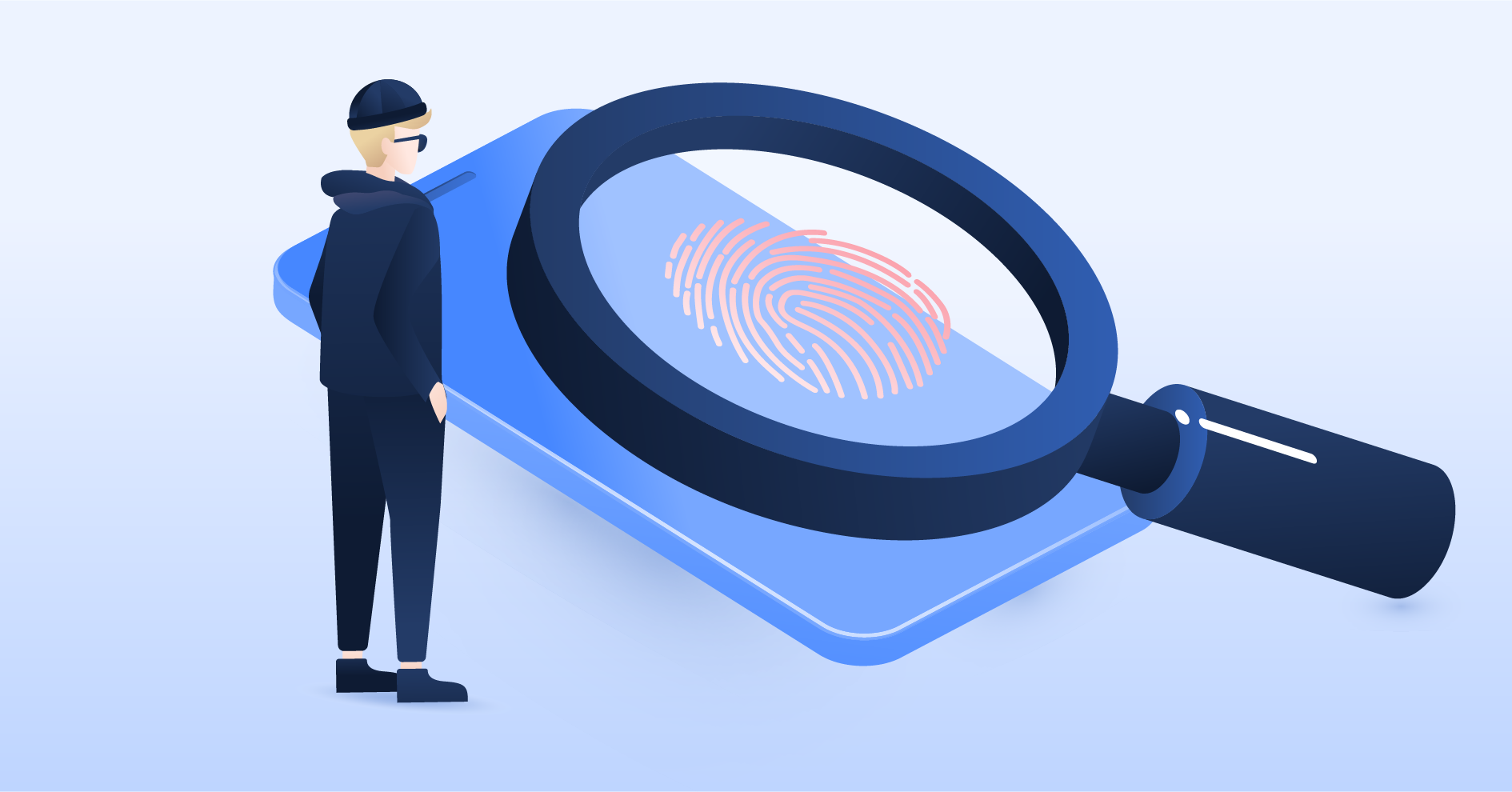Device fingerprinting: The tracking we can’t avoid?
Device fingerprinting doesn’t make privacy and anonymity easy. Every website you visit can be tracked, leaving your trace all over the internet which makes up your digital profile.

What is device fingerprinting?
Device fingerprinting, also known as browser fingerprinting, is used to identify individual users by collecting information about their browser settings and system configuration.
The “fingerprint” includes screen resolution, supported fonts, time zone, operating system, browser version, plug-ins installed and other specs, building up a unique set, which is compared to other users’. It’s unlikely anyone will be using a browser identically customized to yours, so it really is your unique online “fingerprint”.
Once you’re fingerprinted, it gets even easier for third parties to gather more information about you from your behavior online. Simply speaking, every website you visit, every product you view, TV shows you stream, news you read and basically every other move you make on the internet leaves a trace, building up a detailed profile around your interests.
So what if privacy-concerned users deleted their browser cookies on a regular basis to prevent giving up their data for websites? Device fingerprinting doesn’t work that way. It actually goes far beyond – the fingerprinting technology relies on JavaScript rather than cookies to collect data and is able to track users’ activity even when cookies are disabled. No wonder it’s been called the: “cookieless monster”.
What’s more, until recently, device fingerprinting worked under the assumption that a person is using the same single browser all the time. Switching between two or more different browsers would have ruined the “fingerprint” algorithm or impede tracking. isTargetBlank> The newly developed method, cross-browser fingerprinting, is sophisticated enough to identify and track users across multiple browsers and more accurately than ever before – 99,2 % of users were successfully fingerprinted by this new technique. It’s a win for computer science, but its a huge blow to online privacy.
Are there any good uses for browser-fingerprinting?
Uses of browser fingerprinting range from constructive to destructive. Initially, the browser fingerprinting technique was developed for banks and supposed to serve as an online fraud prevention measure by detecting suspicious behavior of individuals. Nowadays, fingerprinting is available for set-up on most websites, but device fingerprinting also threatens the privacy of every user across the internet.
Advertising companies and online merchants are the biggest players in this game. Detailed consumer profiling is extremely valuable for precise targeting and the delivery of customized ads, which bring high profits. That is, marketers and advertisers have the power to use your personal data to earn money.
Even more threatening, if accessed by hackers, your digital “fingerprint” may expose your sensitive data, which, in the worst case scenario, may result in identity theft or hijacked accounts.
Can you stop browser fingerprinting?
Unfortunately, you can’t make your online “fingerprint” disappear completely, but there are certain measures that can at least conceal it a bit. As the new cross-browser technique makes it nearly impossible to avoid fingerprinting, the following 5 techniques are helpful steps to make it harder for web browsers to track you:
#1: Use a popular browser
The rule is, the less you stand out from the crowd on the internet, the more privacy you will have. A choice of unmodified (that means, no plug-ins installed) version of a popular browser, such as Chrome for newly installed Windows 11 operating system, would blend you in among less tech-savvy internet users.
#2 Keep your system and browser updated
Enabling automatic updates will ensure that you are using the latest version of your operating system and browser. Therefore, you’ll join the pool of look-alike users and keep up to date with system security fixes and improvements.
#3: Disable JavaScript and Flash
Device fingerprinting software runs on JavaScript or Flash, so disabling them would be one of the strongest defenses against tracking. However, be prepared that by doing this your browsing experience will get worse, as many websites won’t work properly without JavaScript and user-friendly features that typically run on Flash will be lost.
#4: Browse in private mode
Browsing in Private or Incognito mode or clearing cookies after each session would slightly reduce the amount of information added to your “fingerprint”. Nevertheless, your browser properties can still be monitored.
#5: Use a VPN
Browsing with a VPN (virtual private network) service enabled will keep your real IP address from being added to your online “fingerprint”. As many users with different browsing habits and backgrounds connect to the VPN servers, individual identification in terms of association to IP address becomes impossible.
For this reason, a widely-used VPN service is best:
- it has a bigger crowd of users to get lost in, and a variety of servers to connect in order to obtain a different IP address frequently.
- With over 6400 servers in111 countries, NordVPN is a smart choice for those who cherish their privacy and security, and want to enjoy the internet without restrictions, while feeling safe whenever they go online.
Time will tell what device fingerprinting will evolve into and how (fingers crossed) it will be impeded by privacy laws. As for now, the best thing you can do is to take extra security measures on your own to make your digital “fingerprint” more obscure.
